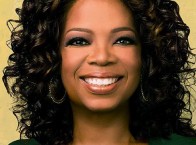Learn 50 things about director, producer and screenwriter Steven Spielberg.
1. Steven Allan Spielberg is an American director, producer and screenwriter.
2. Steven Spielberg is considered as one of the founding pioneers of the New Hollywood era, as well as being viewed as one of the most popular and influential directors and producers in film history.
3. In a career spanning more than four decades, Spielberg's films have covered many themes and genres.
4. Spielberg's early science-fiction and adventure films were seen as archetypes of modern Hollywood blockbuster filmmaking.
5. In later years, his films began addressing humanistic issues such as the Holocaust, the transatlantic slave trade, war, and terrorism. He is one of the co-founders of DreamWorks Studios.
6. Steven Spielberg won the Academy Award for Best Director for Schindler's List (1993) and Saving Private Ryan (1998).
7. Three of Spielberg's films-Jaws (1975), E.T. the Extra-Terrestrial (1982), and Jurassic Park (1993)-achieved box office records, originated and came to epitomize the blockbuster movie.
8. The unadjusted gross of all Spielberg-directed films exceeds $8.5 billion worldwide.
9. His personal net worth is estimated to be more than $3 billion.
10. Steven Spielberg was born in Cincinnati, Ohio, to an Orthodox Jewish family.
11. His mother, Leah (Adler) Posner (born 1920), was a restaurateur and concert pianist, and his father, Arnold Spielberg (born 1917), was an electrical engineer involved in the development of computers.
12. In 1950, his family moved to Haddon Township, New Jersey when his father took a job with RCA. Three years later, the family moved to Phoenix, Arizona
13. Steven Spielberg attended Hebrew school from 1953 to 1957, in classes taught by Rabbi Albert L. Lewis.
14. As a child, Spielberg faced difficulty reconciling being an Orthodox Jew with the perception of him by other children he played with. "It isn't something I enjoy admitting," he once said, "but when I was seven, eight, nine years old, God forgive me, I was embarrassed because we were Orthodox Jews. I was embarrassed by the outward perception of my parents' Jewish practices. I was never really ashamed to be Jewish, but I was uneasy at times."
15. Steven Spielberg also said he suffered from acts of anti-Semitic prejudice and bullying: "In high school, I got smacked and kicked around. Two bloody noses. It was horrible."
16. His first home movie was of a train wreck involving his toy Lionel trains, then age 12.
17. Throughout his early teens, and after entering high school, Spielberg continued to make amateur 8 mm "adventure" films.
18. In 1958, he became a Boy Scout and fulfilled a requirement for the photography merit badge by making a nine-minute 8 mm film entitled The Last Gunfight.
19. At age thirteen, while living in Phoenix, Spielberg won a prize for a 40-minute war film he titled Escape to Nowhere, using a cast composed of other high school friends. That motivated him to make 15 more amateur 8mm films.
20. In 1963, at age sixteen, Spielberg wrote and directed his first independent film, a 140-minute science fiction adventure called Firelight, which would later inspire Close Encounters. The film was made for $500, most of which came from his father, and was shown in a local cinema for one evening, which earned back its cost.
21. After attending Arcadia High School in Phoenix for three years, his family next moved to Saratoga, California, where he later graduated from Saratoga High School in 1965.
22. He attained the rank of Eagle Scout.
23. His parents divorced while he was still in school, and soon after he graduated Spielberg moved to Los Angeles, staying initially with his father.
24. His long-term goal was to become a film director.
25. In Los Angeles, he applied to the University of Southern California's film school, but was turned down because of his "C" grade average.
26. Steven Spielberg then applied and was admitted to California State University, Long Beach, where he majored in English, and became a brother of Theta Chi Fraternity.
27. While still a student, he was offered a small unpaid intern job at Universal Studios with the editing department.
28. He was later given the opportunity to make a short film for theatrical release, the 26-minute, 35mm, Amblin', which he wrote and directed. Studio vice president Sidney Sheinberg was impressed by the film, which had won a number of awards, and offered Spielberg a seven-year directing contract. It made him the youngest director ever to be signed for a long-term deal with a major Hollywood studio.
29. He subsequently dropped out of college to begin professionally directing TV productions with Universal.
30. His first professional TV job came when he was hired to direct one of the segments for the 1969 pilot episode of Night Gallery. The segment, "Eyes," starred Joan Crawford; she and Spielberg were reportedly close friends until her death.
31. Based on the strength of his work, Universal signed Spielberg to do four TV films. The first was a Richard Matheson adaptation called Duel.
32. Studio producers Richard D. Zanuck and David Brown offered Spielberg the director's chair for Jaws, a thriller-horror film based on the Peter Benchley novel about an enormous killer shark. Spielberg has often referred to the gruelling shoot as his professional crucible. Despite the film's ultimate, enormous success, it was nearly shut down due to delays and budget over-runs.
33. Rejecting offers to direct Jaws 2, King Kong and Superman, Spielberg and actor Richard Dreyfuss re-convened to work on a film about UFOs, which became Close Encounters of the Third Kind (1977).
34. One of the rare films both written and directed by Spielberg, Close Encounters was a critical and box office hit, giving Spielberg his first Best Director nomination from the Academy as well as earning six other Academy Awards nominations. It won Oscars in two categories (Cinematography, Vilmos Zsigmond, and a Special Achievement Award for Sound Effects Editing, Frank E. Warner).
35. Steven Spielberg teamed with Star Wars creator and friend George Lucas on an action adventure film, Raiders of the Lost Ark, the first of the Indiana Jones films. The archaeologist and adventurer hero Indiana Jones was played by Harrison Ford (whom Lucas had previously cast in his Star Wars films as Han Solo).
36. Spielberg returned to the science fiction genre with E.T. the Extra-Terrestrial. It was the story of a young boy and the alien he befriends, who was accidentally left behind by his companions and is attempting to return home. E.T. the Extra-Terrestrial went on to become the top-grossing film of all time. E.T. was also nominated for nine Academy Awards including Best Picture and Best Director.
37. Between 1982 and 1985, Spielberg produced three high-grossing films: Poltergeist (for which he also co-wrote the screenplay), a big-screen adaptation of The Twilight Zone (for which he directed the segment "Kick The Can"), and The Goonies (Spielberg, executive producer, also wrote the story on which the screenplay was based).
38. Spielberg appeared in a cameo on Cyndi Lauper's music video for the movie's theme song, The Goonies R Good Enough.
39. His next directorial feature was the Raiders prequel Indiana Jones and the Temple of Doom.
40. It was on this project that Spielberg also met his future wife, actress Kate Capshaw.
41. In 1993, Spielberg returned to the adventure genre with the film version of Michael Crichton's novel Jurassic Park, about a theme park with genetically engineered dinosaurs. This would be the third time that one of Spielberg's films became the highest grossing film ever.
42. Spielberg's next film, Schindler's List, was based on the true story of Oskar Schindler, a man who risked his life to save 1,100 Jews from the Holocaust.
43. Schindler's List earned Spielberg his first Academy Award for Best Director (it also won Best Picture).
44. With the film a huge success at the box office, Spielberg used the profits to set up the Shoah Foundation, a non-profit organization that archives filmed testimony of Holocaust survivors. In 1997, the American Film Institute listed it among the 10 Greatest American Films ever Made (#9) which moved up to (#8) when the list was remade in 2007.
45. Apart from being an ardent gamer Spielberg has had a long history of involvement in video games. He has been giving thanks to his games of his division DreamWorks Interactive most notable as Someone's in the Kitchen with script written by Animaniacs' Paul Rugg, Goosebumps: Escape from HorrorLand, The Neverhood (all in 1996), Skullmonkeys, Dilbert's Desktop Games, Goosebumps: Attack of the Mutant (all 1997), Boombots (1999), T'ai Fu: Wrath of the Tiger (1999), and Clive Barker's Undying (2001).
46. Spielberg's films often deal with several recurring themes. Most of his films deal with ordinary characters searching for or coming in contact with extraordinary beings or finding themselves in extraordinary circumstances.
47. A strong consistent theme in his family-friendly work is a childlike, even naïve, sense of wonder and faith, as attested by works such as Close Encounters of the Third Kind, E.T. the Extra-Terrestrial, Hook, and A.I. Artificial Intelligence.
48. Spielberg subsequently developed a relationship with actress Kate Capshaw, whom he met when he cast her in Indiana Jones and the Temple of Doom. They married on October 12, 1991. Capshaw is a convert to Judaism.
49. There are seven children in the Spielberg-Capshaw family.
50. In 2002, Spielberg was one of eight flagbearers who carried the Olympic Flag into Rice-Eccles Stadium at the Opening Ceremonies of the 2002 Winter Olympic Games in Salt Lake City.
Source: Wikipedia.org

 Share on Facebook
Share on Facebook




















